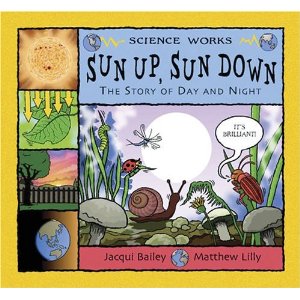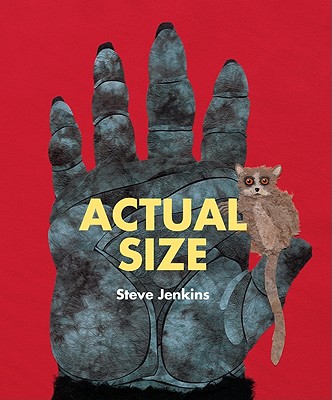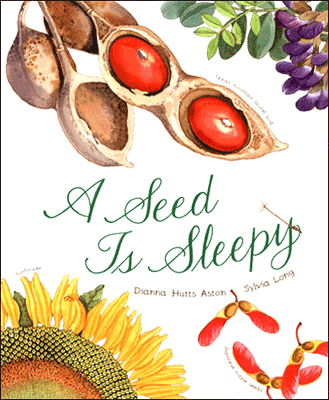By Ann Earle
Illustrated by Henry Cole
1995
An engaging, detailed read-aloud about bat behavior and characteristics. I especially like how the book tries to dispel negative stereotypes of bats and teach how much they help the environment.
The illustrations are life-like drawings, and there are some plans for building a bat house at the back of the book!
This is a collection of excellent K-5 books and other resources gathered by SFUSD teacher librarians that supports the implementation of Common Core standards in our libraries and classrooms.
Thursday, December 20, 2012
Zipping, Zapping, Zooming Bats
Labels:
Animals,
Grades K-3,
Great read-aloud,
Life science
Red Leaf, Yellow Leaf
By Lois Ehlert
(1991)
I like this book because it lends itself to the idea of making a science notebook, or journal. The illustrations are colorful, bold collages of cut paper and real leaves/seeds--lots of texture.
The story is about a child who plants a sugar maple tree, and how the tree grows and changes throughout the seasons.
(1991)
I like this book because it lends itself to the idea of making a science notebook, or journal. The illustrations are colorful, bold collages of cut paper and real leaves/seeds--lots of texture.
The story is about a child who plants a sugar maple tree, and how the tree grows and changes throughout the seasons.
Labels:
Fall,
Grades K-3,
Great read-aloud,
Life cycles,
Life science
Monday, November 26, 2012
Swirl by Swirl
Spirals in Nature
By Joyce Sidman
Illustrated by Beth Krommes
2011
This beautifully illustrated book simply explores spirals in nature; in animals and plants, spiderwebs and waves, tornadoes and galaxies-- spirals appear all around us because they work well in nature.
By Joyce Sidman
Illustrated by Beth Krommes
2011
This beautifully illustrated book simply explores spirals in nature; in animals and plants, spiderwebs and waves, tornadoes and galaxies-- spirals appear all around us because they work well in nature.
Tuesday, November 20, 2012
Compost Stew
An A to Z Recipe for the Earth
By Mary McKenna Siddals
Illustrated by Ashley Wolff
2010
This is a clever ABC book with a wonderful theme: a "recipe" for Compost Stew. Told in verse, with beautiful collage illustrations, it is a great guide for making a compost pile, and building an ecological foundation.
By Mary McKenna Siddals
Illustrated by Ashley Wolff
2010
This is a clever ABC book with a wonderful theme: a "recipe" for Compost Stew. Told in verse, with beautiful collage illustrations, it is a great guide for making a compost pile, and building an ecological foundation.
Labels:
Ecology,
Grades K-3,
Great read-aloud,
Life science
Monday, November 19, 2012
Actual Size
By Steve Jenkins
2004
If you've never seen one of Steve Jenkins books, definitely check them out. They are all wonderful.
I particularly love this one, and I have read it to students from preschool up to 8th grade--seriously, it engages everyone!
Each page introduces an animal or two, or perhaps just part of an animal (giant squid eyeball, for example) in actual size. There is very little text, just a sentence or so plus the height, weight, length, etc.of the featured animal.
At the back of the book , you can see full-body pictures of each animal and read a little more about each one.
This is a perfect read-aloud for any age group!
2004
If you've never seen one of Steve Jenkins books, definitely check them out. They are all wonderful.
I particularly love this one, and I have read it to students from preschool up to 8th grade--seriously, it engages everyone!
Each page introduces an animal or two, or perhaps just part of an animal (giant squid eyeball, for example) in actual size. There is very little text, just a sentence or so plus the height, weight, length, etc.of the featured animal.
At the back of the book , you can see full-body pictures of each animal and read a little more about each one.
This is a perfect read-aloud for any age group!
Labels:
Animals,
Grades 3-5,
Grades K-3,
Great read-aloud,
Life science
Danger! Volcanoes
By Seymour Simon
2002
This little book is a nice introduction to volcanoes for younger readers.
With great photos, the book is engaging and is a good read-aloud. It has some nice non-fiction text features like bolded words, but no table of contents or index (like many of S. Simon's books).
2002
This little book is a nice introduction to volcanoes for younger readers.
With great photos, the book is engaging and is a good read-aloud. It has some nice non-fiction text features like bolded words, but no table of contents or index (like many of S. Simon's books).
The Drop in My Drink
By Meredith Hooper
Illustrated by Chris Coady
1998
This is an older book as far as science resources go, but it is a gem! It tells the story of the water cycle as a riveting narrative--comets, dinosaurs, giant pythons, caves--the whole nine yards. The story begins and ends with a boy holding a glass of water and considering where each drop has been. Really lovely for an upper-grade read-aloud.
Illustrated by Chris Coady
1998
This is an older book as far as science resources go, but it is a gem! It tells the story of the water cycle as a riveting narrative--comets, dinosaurs, giant pythons, caves--the whole nine yards. The story begins and ends with a boy holding a glass of water and considering where each drop has been. Really lovely for an upper-grade read-aloud.
Labels:
Earth science,
Grades 3-5,
Great read-aloud,
Water cycle
Sun Up, Sun Down
 The Story of Day and Night
The Story of Day and NightBy Jacqui Bailey and Matthew Lilly
2004
31 pages
This book has a comic-book style that appeals to many children. It is full of information about the sun from dawn to dusk, including how light rays travel, how shadows are formed, and how the moon lights up the night sky. There are some fun projects suggested at the end.
A Seed is Sleepy
by Dianna Hutts Aston
Illustrated by Sylvia Long
2007
This book is gorgeously illustrated and beautifully written; it is full of all kinds of seed and plant facts, but in a poetic style.
Illustrated by Sylvia Long
2007
This book is gorgeously illustrated and beautifully written; it is full of all kinds of seed and plant facts, but in a poetic style.
Labels:
Grades 3-5,
Grades K-3,
Great read-aloud,
Life cycles,
Life science
Monday, November 12, 2012
Wish You Were Here
by Kathleen Krull, 1997

(Title Peek Summary Annotation)
During the wildest summer of her life so far, Emily and her grandmother visit each and every one of the 50 states. They fly to see the highest place in North America--4 miles up Mount McKinley in Alaska--and drive through the desert to the lowest (and hottest), in Death Valley. Emily describes the breathtaking sights, scrumptious food, funny stories, and fascinating history that make each state unique. She describes many customs brought here from other countries and the contributions of American Indians. In Emily's entries and in tables at the back of the book, there are plenty of incredible facts, important dates in history, and stories of famous people. Packed with information and amusement, this is a delightful introduction to the U.S.A.

(Title Peek Summary Annotation)
During the wildest summer of her life so far, Emily and her grandmother visit each and every one of the 50 states. They fly to see the highest place in North America--4 miles up Mount McKinley in Alaska--and drive through the desert to the lowest (and hottest), in Death Valley. Emily describes the breathtaking sights, scrumptious food, funny stories, and fascinating history that make each state unique. She describes many customs brought here from other countries and the contributions of American Indians. In Emily's entries and in tables at the back of the book, there are plenty of incredible facts, important dates in history, and stories of famous people. Packed with information and amusement, this is a delightful introduction to the U.S.A.
Families

Some children live with their mothers and fathers. Others have stepparents or live with just one parent. Still others live with grandparents or foster parents who chose them specially. But all children all around the world, are part of families--big and small, loving, sharing, and caring for one another. This look at all kinds of families from all over the world helps young children begin to think about families they belong to, as it gives them a glimpse into the rich variety of world cultures.
(Title Peek summary annotation)
Pumpkin Circle
| This book follows the life cycle of a pumpkin from seed to sprout to plant to flower to fruit and back to seed. A few simple lines of rhyming or near-rhyming verse comment on each stage of development; striking color photographs illustrate the text. The many close-ups show every detail of the plants, while wider shots take in the whole garden or even a mountain of pumpkins. Crisp and beautifully composed, the photos are awash in gleaming shades of green as well as glowing gold and orange tones. The last page provides instructions for growing pumpkins. A visually striking book that teachers may want to read aloud. --Carolyn Phelan |
Rah, Rah, Radishes! A Vegetable Chant

Redwoods

An ordinary train ride becomes and extraordinary trip to the great ancient forests A subway trip is transformed when a young boy happens upon a book about redwood forests. As he reads the information unfolds, and with each new bit of knowledge, he travels - all the way to California to climb into the Redwood canopy. Crammed with interesting and accurate information about these great natural wonders, Jason Chin's first book is innovative nonfiction set within a strong and beautiful picture storybook.
Friday, October 19, 2012
Bright Beetle
By Rick Chrustowski, 2000
 Follow the life of one ladybug as she journeys from the egg to adulthood.
Follow the life of one ladybug as she journeys from the egg to adulthood.
On a warm, sunny day at the end of summer, a ladybug lays her yellow eggs on a leaf. Soon, each egg hatches into a tiny larva with a huge appetite for aphids. Despite the dangers of ants and praying mantises, the larvae grow big enough to create hard pupae around themselves. When they break through the pupae, they are ladybugs at last.
In simple, poetic text and vibrant illustrations, this nonfiction picture book explores the life-cycle of the most beloved beetle.
(Summary from Goodreads)
 Follow the life of one ladybug as she journeys from the egg to adulthood.
Follow the life of one ladybug as she journeys from the egg to adulthood.On a warm, sunny day at the end of summer, a ladybug lays her yellow eggs on a leaf. Soon, each egg hatches into a tiny larva with a huge appetite for aphids. Despite the dangers of ants and praying mantises, the larvae grow big enough to create hard pupae around themselves. When they break through the pupae, they are ladybugs at last.
In simple, poetic text and vibrant illustrations, this nonfiction picture book explores the life-cycle of the most beloved beetle.
(Summary from Goodreads)
Labels:
Grades K-3,
Great read-aloud,
Life cycles,
Life science
Subscribe to:
Posts (Atom)








